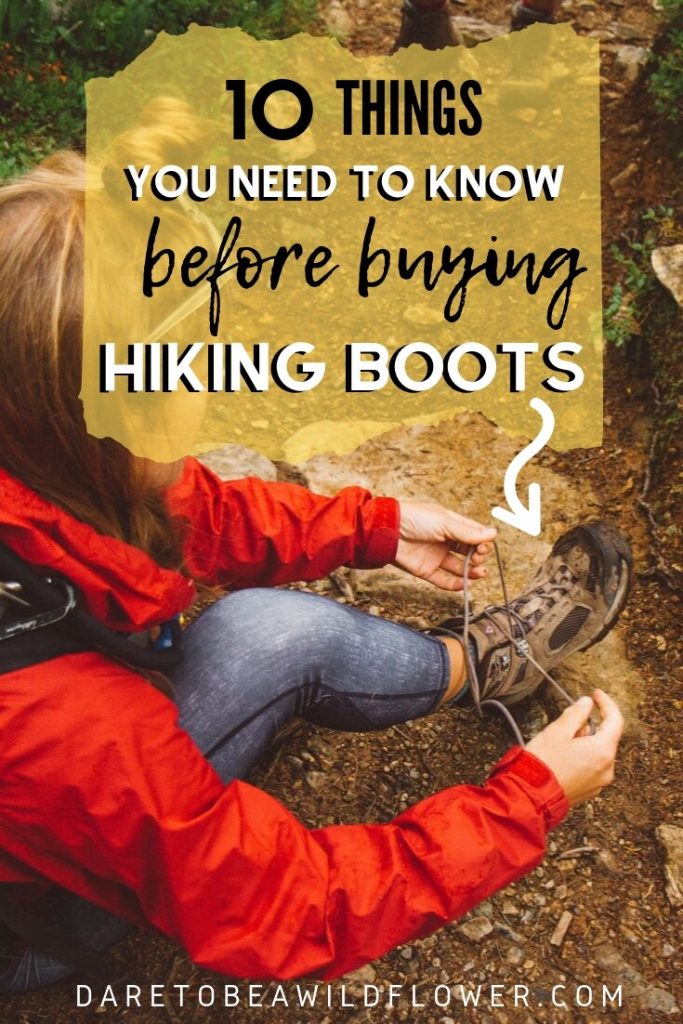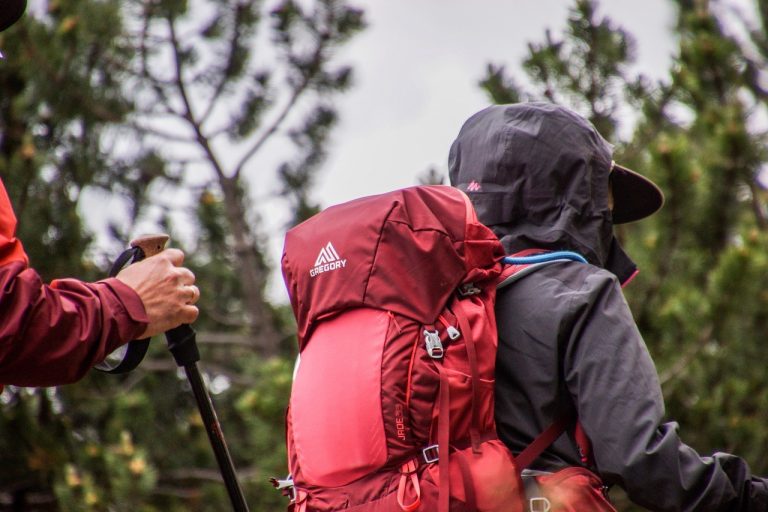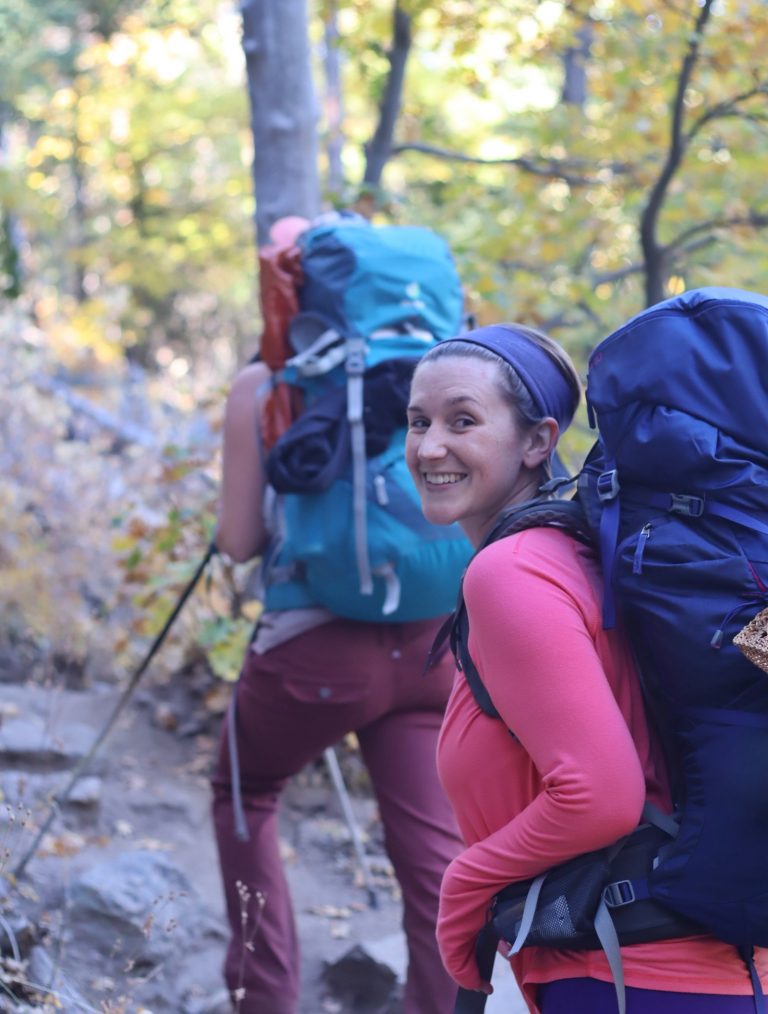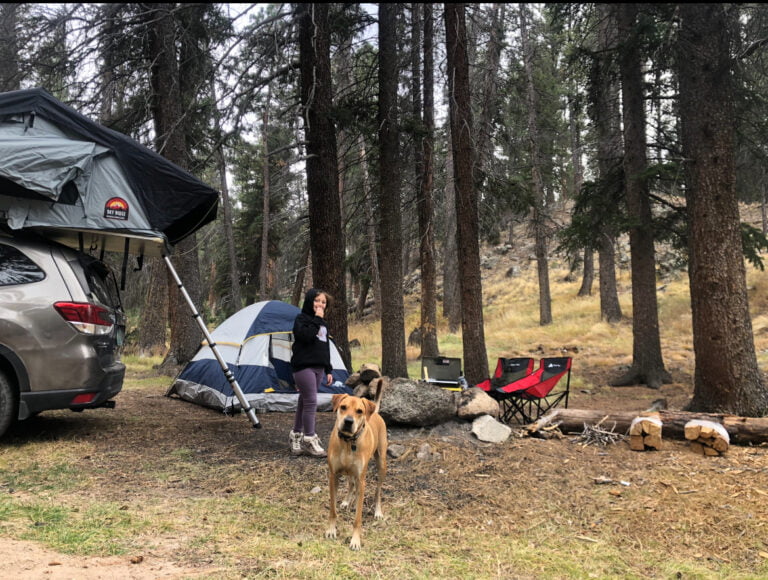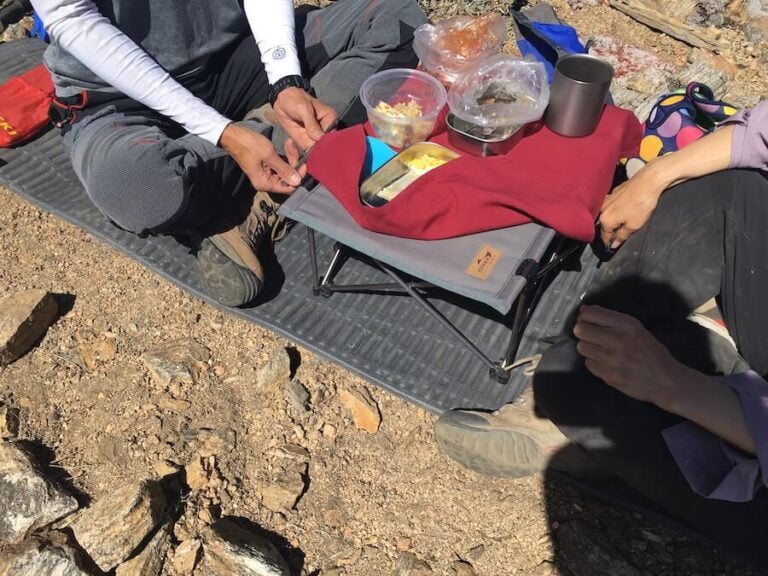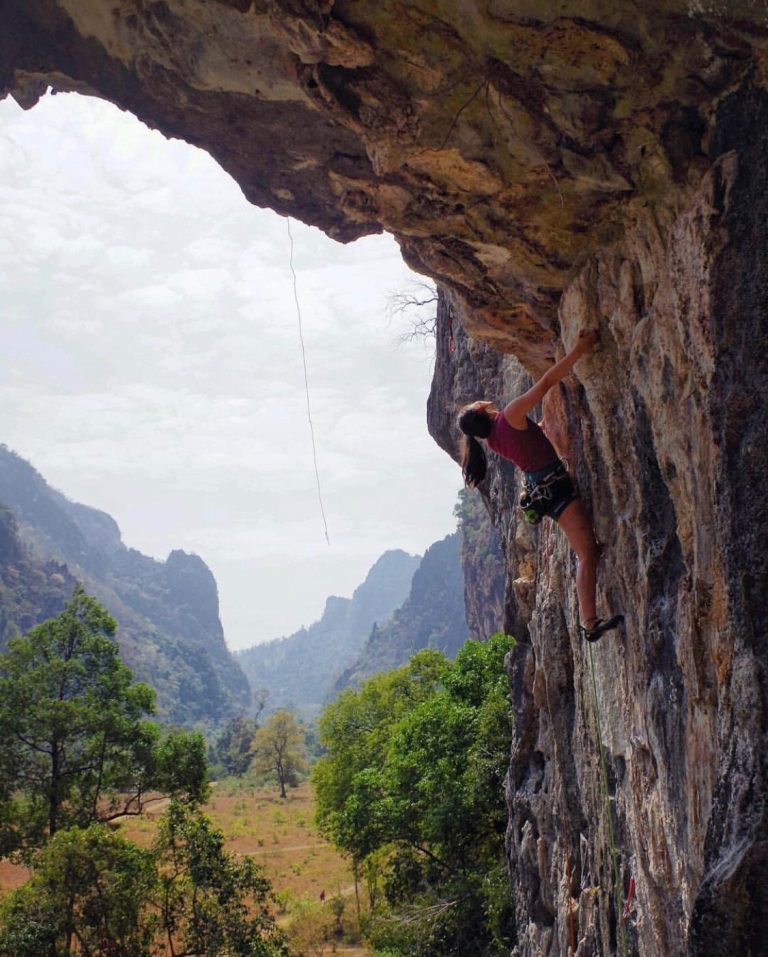What To Look For In Hiking Boots: 10 Tips for Size, Fit & More!
Having hiking boots that actually fit your feet could be the difference between an incredible, transformative trip and a traumatizing, painful weekend where you lose some toenails.
I don’t know about you but I’m all for Team Keep Your Toenails!
This post may contain some affiliate links for your convenience. This means if you make a purchase after clicking a link, I may earn a small commission but it won’t cost you a penny more! Isn’t that rad? Thanks for supporting the work I do at daretobeawildflower.com. Click here to read my full disclosure policy.
1. Get clear on the type of hikes you plan on going on.
Trail runners or approach shoes might be great alternatives to some big ol’ hiking boots.
But there are definitely hikes and bodies that require the level of support that a classic boot will offer.
Here are some things to consider:
- Are you carrying a heavy load in your pack?
- Do you have a history with plantar fasciitis or ankle injuries?
- Are you doing some serious milage? Is that something your body is used to?
- Are you willing to invest more money into something that is going to last you years?
- Do you mind having a bit of weight on your feet?
- Do you want to be able to throw some Microspikes or other ice traction apparatus on them?
- Are you gaining some major elevation?
- Will you be hiking off-trail (aka bush wacking) and need more rugged footwear?
If you answered yes to most or all of these, then it looks like a hiking boot is in your near future.
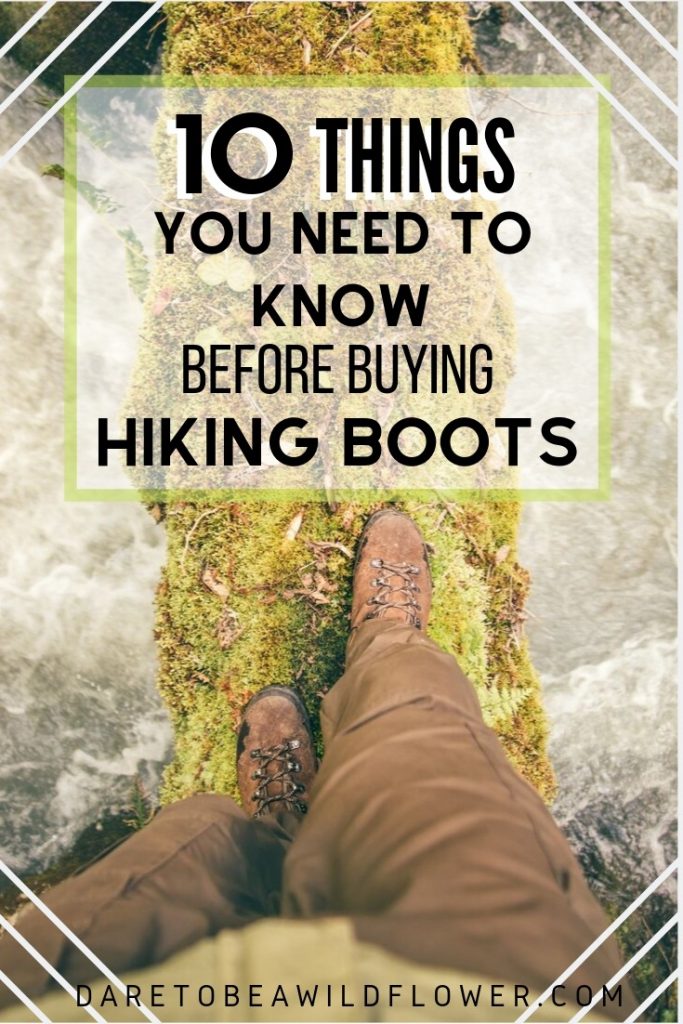
2. Get your feet measured.
Now I know what you are thinking. “Um, I think I know my show size by now!”
Feet change. Arches fall. I mean, the only constant in life is change, right? Or something like that… look, you are just going to just have to trust me on this one!
Either visit an outdoor gear shop where you can have a professional measure your feet or you can do it yourself which is a little trickier.
If you go the latter route, make sure to measure your feet while sitting down and standing up.
Be sure not to shift your weight back or curl your toes as you look down at the brannock device. This will totally throw off your measurement.
Measure the length and width of bothfeet.
Length: Consider the length of your feet to be where your longest toe ends (round up if it measures in between two sizes).
Women’s Width:
- AA: Very narrow
- A: Narrow
- B: Standard
- C/D: Wide
- EE: Very Wide
Pro Tip: Don’t forget to bring your hiking socks! Outfitters may provide some hiking socks but you never know if someone threw the try-on pair back after using them. Gnarly and no thank you. And for the love of happy feet, please don’t wear cotton socks.
3. Go up one full size.
Now before your head explodes, let me explain:
- Your hiking shoe should not fit your foot the same as your kick around shoes.
- Your feet are going to swell when you are hiking.
- You are going to be wearing awesomely thick hiking socks.
- If you want to keep all of your toenails, you want to make sure that you have about half an inch of space from the end of your longest toe to the front of your boot.
People seem to have a hard time accepting this and let me tell you- climbers are notorious when it comes to this!
I worked in a gear shop for years, mostly doing boot fits. I would spend half of my work day trying to convince people to try on boots in a larger size. People were straight up offended.
They would look at me like I just asked them to slap their mama and exclaim “I have never worn a size ___!”
Various brands run differently and you don’t have to tell anybody what size your boots are. Because they probably don’t care. Trying on the boots one full size up from your larger foot is a great place to start.
Don’t freak out if your feet are different sizes. I’ve measured (not exaggerating here) hundreds of feet and most people have differences in the length and width of their feet.
The more similar they are in shape, the easier it will be to find that perfect boot. But you have to work with what your mama gave ya! Do you feel me?
4. Be sure to properly lace your boots.
People can also smash their toes in while hiking because they didn’t lace their boots properly.
It should be snug enough that your foot doesn’t slide forward when you tap the toes/ hike downhill, but don’t strap them so tight that your toes start going numb.
5. Know how a hiking boot should fit.
Stand up and wiggle them little piglets!
Do they feel a little bit big? Because they should! Remember, your feet are going to swell so that will take up that little bit of wiggle room you are feeling inside the boot.
Do you feel any pressure points or hotspots? Is there anything poking into your feet?
Pro Tip: It’s best to try on boots in the evening when your feet are a little larger compared to in the morning.
6. Tap the toe of the boot on the ground.
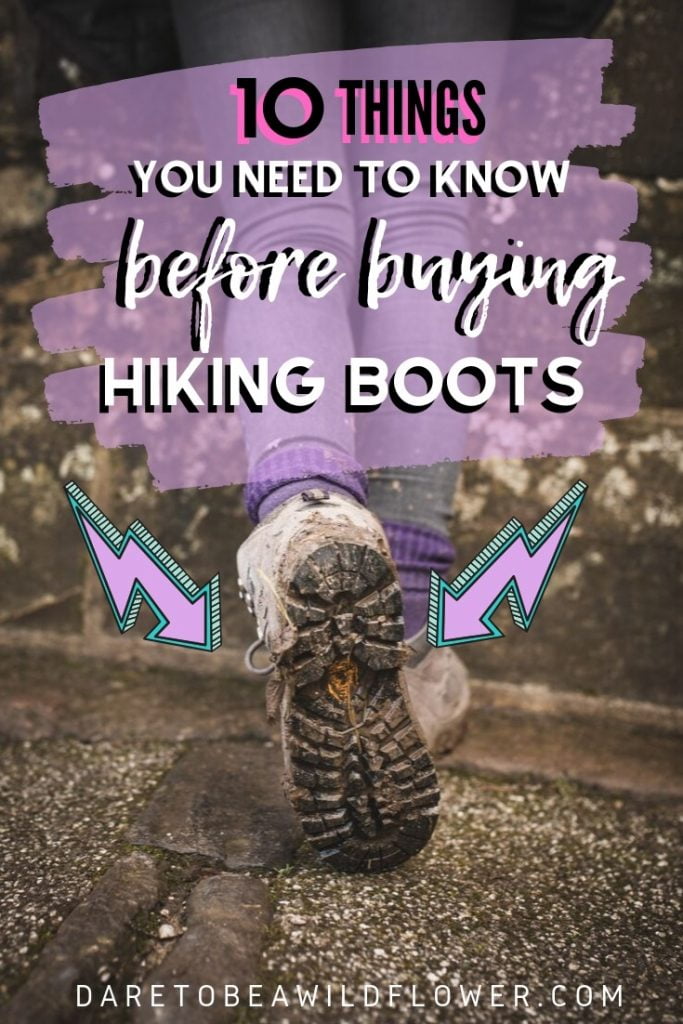
If your toes are touching the end of the boot when you tap the toes on the ground, then try a half size up.
Imagine this happening hundreds and thousands of times as you are trekking downhill, with your toenails being jammed back into your toes again and again with every step.
This is a terribly painful experience and can be avoided by putting in the time up front when finding your magical unicorn boot.
Go Team Keep Your Toenails!
This could also happen if your boots are laced too loosely and your entire foot is sliding forward. See point #4.
7. Notice how your foot moves within the boot as you walk.
Walk around. If available, walk up some steps or a ramp. Check if you are getting any heel lift. This is a problem that can create a big, nasty blister on your heel.
This could also be caused by wearing a boot that’s too big. I recommend going with the biggest size possible that fits right.
If your foot is sliding all around inside that boot like drunken frat boys on a slip n’ slide, then try going down a half size. If you are still getting heel lift, then consider placing an insert with a high volume in the heel.
This would take up more space in that area of the boot so there is less space for your heel to slide around.
If you wear a custom orthotic, make sure you remove the insole that’s in the boot and replace it with your custom fit one.
You can also try lacing the boot with a heel lock.
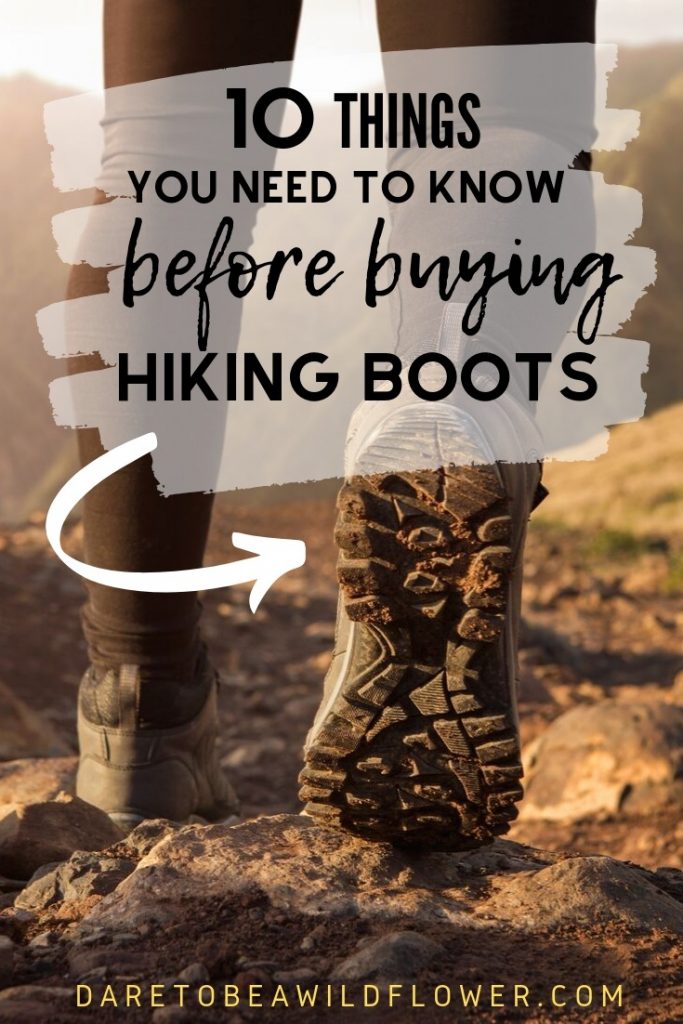
8. Break them in slowly.
Now I know you are excited about your new, awesome boots but the first time you take these puppies out should not be on your 10 miler you have planned on Saturday with your girls!
Start off with something short like 1-3 miles.
Consider it like dating your boots.
You don’t want to go on a 10-hour first date without getting to know them a bit first. They might not be as good of a fit as you originally thought.
Spending the next 10 hours with them could be painfully unbearable and make you want to poke your eyeballs out while foaming at the mouth.
9. Let’s Talk About Socks, Baby!
It is so important to wear socks that are made of a wicking material. Wool, bamboo, and synthetic are great options.
I’ve had great experiences with Smartwool and Darn Tough socks. Darn Tough are made in America, offer synthetic and wool socks, and have some funkadelic colors and designs. These are my go-to’s.
Cotton kills when it comes to hiking socks so save those for your kick-around shoes. They absorb moisture, hold onto it, and can cause some nasty blisters.
Pro Tip: Always, always, always, bring an extra pair of socks, even on day hikes.
This strategy has saved my feet many times in the remote and unpredictable unfolding of mountain dwelling. Changing out your socks half way through hike can a game changer.
10. To Waterproof, or Not To Waterproof?
Well, isn’t that the question?
Waterproof boots are great if:
- You looking for a 3-season backpacking boot.
- You live somewhere where there is a decent amount of rainfall.
- You don’t want dirt getting through your boot to your feet.
Non-waterproof boots are great if:
- Your feet tend to get really hot.
- You don’t mind sacrificing dirt on your feet for ventilation.
- You are hiking through water, like the Narrows in Zion National Park. This will allow the boot to drain out the water.
- You live somewhere hella dry.
I prefer a boot or trail runner with no waterproofing for most of my adventures. I appreciate the breathability. Also, Southern California doesn’t get very much rain.
Ultimately, your feet know what feels good better than anyone else does. So listen to them!
I hope you found these tips helpful. 💛
Pin For Later | 10 Things You Need To Know BEFORE Buying Hiking Boots
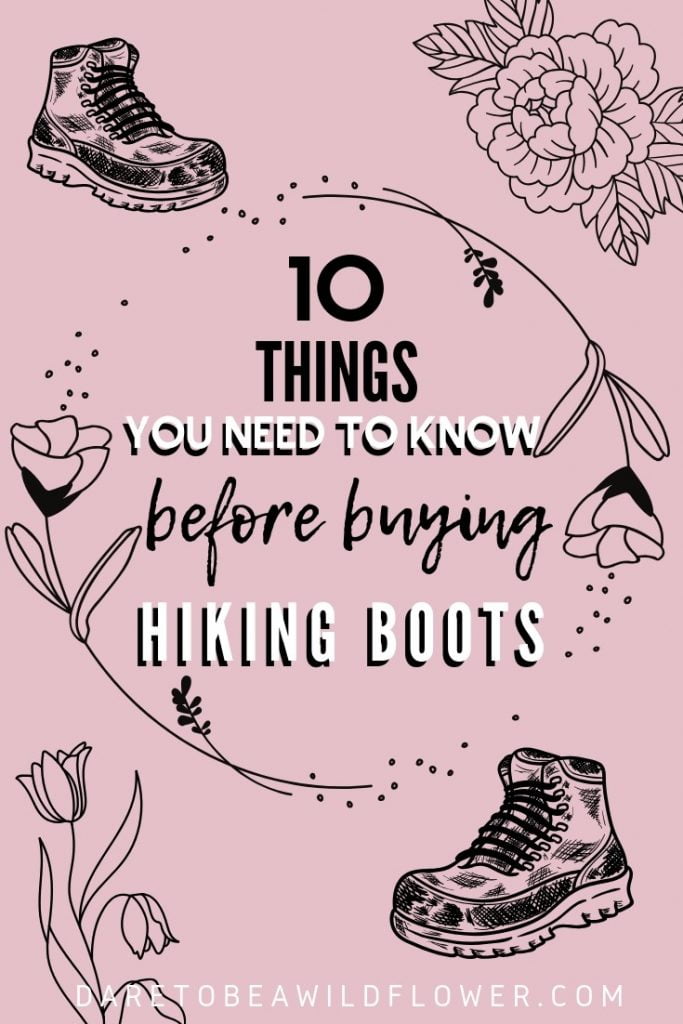
What are your go-to’s when you hit the trails?
I love my Salomon XR Missions for my lightweight, breathable trail shoe and my La Sportiva GTX Synthesis for when I want waterproof and little more support.
These fit a wider foot really nicely, are very light for the support they offer, and they are still going strong even after all the milage I have put on them! And yes, I went one full size up for these babes.
